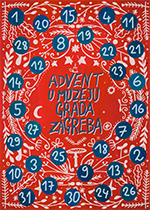Living near the bishop’s estate, many inhabitants of Gornja (Upper) Vlaška Street worked in the palace in various capacities - from manager to cook and craftsman. The inhabitants of Donja (Lower) Vlaška Street, which was closer to the bishop’s farm, worked as labourers there. The winding road stretched to the far east of the town and was used by pedestrians, carts and travellers on horseback going to Sesvete and Varaždin and from there on to Vienna, which is why around 1820 the road was called “Bečka cesta” (the Viennese Road).
In 1790, Bishop Maksimilijan Vrhovac had a neglected plot of land near the palace landscaped into an extensive garden and nursery. Opposite the garden, a large house was built for the staff, the estate manager and the veterinary surgeon. Bishop Vrhovac established a foundation for the building of the Boys’ Orphanage for talented children from impoverished families, aristocratic and non-aristocratic, which was opened in 1827. In the same year, shortly before his death, he established a foundation for “the benefit of the community of Vlaška Street”. The money was used for the improvement of the road, the building of a barracks and the conversion of the fishponds into a park.
The Chapter of Zagreb gave its land north of the canons’ residences to “our free village” - Lepa Ves, later Nova Ves, a settlement on the east and west side of the “broad road”, later Nova Ves Street. The church of St. John the Baptist was a landmark and in 1361 a document speaks of “our new village at St. John’s of Zagreb”.
Nova Ves was the traditional home of the prebendaries, twelve in number, who looked after the altars in the cathedral, and of “the burghers of Nova Ves”, tradesmen and craftsmen. Their houses were modest: those of the prebendaries, the small timbered curiae, all named after patron saints, were situated in the southern part of Nova Ves. In the 18th and 19th centuries they were replaced by houses of brick and stone. The burghers’ houses were also their workshops. Most of them were one-storey buildings; the only larger building was the long two-storey Home for Invalid Priests.
Into the family of Josip Tkalčić, tanner and inn-keeper in Nova Ves, a son, the seventh child of the family, was born in 1840. Ivan Tkalčić was appointed prebendary of Zagreb Cathedral in 1867, a post he retained until his death. He was also the Chapter’s archivist and a renowned historian, whose special interest was the history of Kaptol and Gradec.
Željka Kolveshi

